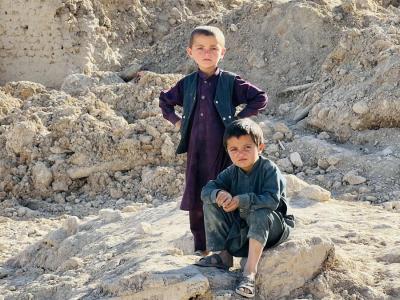publication / April 17, 2025
Triple Threat: Climate Change, Conflict and Hunger endangering children's lives
Climate change, violence, and hunger are trapping vulnerable children in poverty. This report explores their intersection and the urgent need for action.
press release / April 17, 2025
Climate, conflict and hunger create spiralling crisis for world’s most vulnerable
Climate change, conflict, and hunger are creating a crisis for the world's most vulnerable, with nearly 90% seeing climate change as a serious threat.
article / April 14, 2025
From Mandalay to Yangon: What I witnessed changed me forever
Food insecurity, which was already affecting over 15 million people before the quake, is now deepening. Families who were barely getting by now have nothing. Many people are sleeping on the streets, too afraid to return to their homes due to the ongoing threat of aftershocks. I remember one young girl who told me she hadn’t slept properly since the earthquake - every sound made her jump. What these families need is not just shelter, but safety, dignity, and a return to normalcy.
publication / April 2, 2025
South Asia and Pacific ENOUGH 2025 Campaign Report
ENOUGH Report: Learn how World Vision fights child hunger in South Asia & Pacific. Discover youth-led solutions & our impact on nutrition policy.
publication / March 18, 2025
Price Shocks 2025: High Prices Lead to Hunger Pandemic
World Vision report that looks at how long it takes for families around the world to be able to afford basic food supplies.
article / April 11, 2025
You will never be alone: The Transformative Power of “I Support My Friend”
Adolescents in the West Bank have a lot of reasons to worry. This constant stress and anxiety can take a serious toll on them and have life-long consequences. To support them, World Vision has launched a new initiative called “I Support My Friend” (ISMF). The programme trains young people to recognise emotional distress among their peers, to offer psychological first aid, and to support each other in kind, informed, and stigma-free ways.
article / April 17, 2025
Erratic weather the new norm as floods compound hunger in Afghanistan
Ayatulla and thousands of Afghans face severe challenges recovering from 2024's devastating floods in Ghor and Faryab, compounded by economic hardship and climate change.
publication / March 25, 2025
World Vision and World Food Programme Partnership Snapshot | 2024
An estimated 343 million people are facing acute levels of food insecurity in 74 countries, across the world1. Out of these, nearly 45 million people are in ‘emergency’ or worse levels of hunger.
article / April 16, 2025
World Vision in partnership with World Food Programme bring hope and support to Myanmar earthquake survivors
As part of WV’s Myanmar Earthquake Response, in partnership with WFP, 8,859 people have received Multipurpose Cash Assistance (MPCA). The World Food Programme and World Vision have been in long-term partnership for years prior to the earthquake. With WFP's support, World Vision has provided support to vulnerable families and children through various initiatives, including food distribution, maternal and child cash transfers, assistance for internally displaced persons (IDPs), and cash-for-assets programmes.








